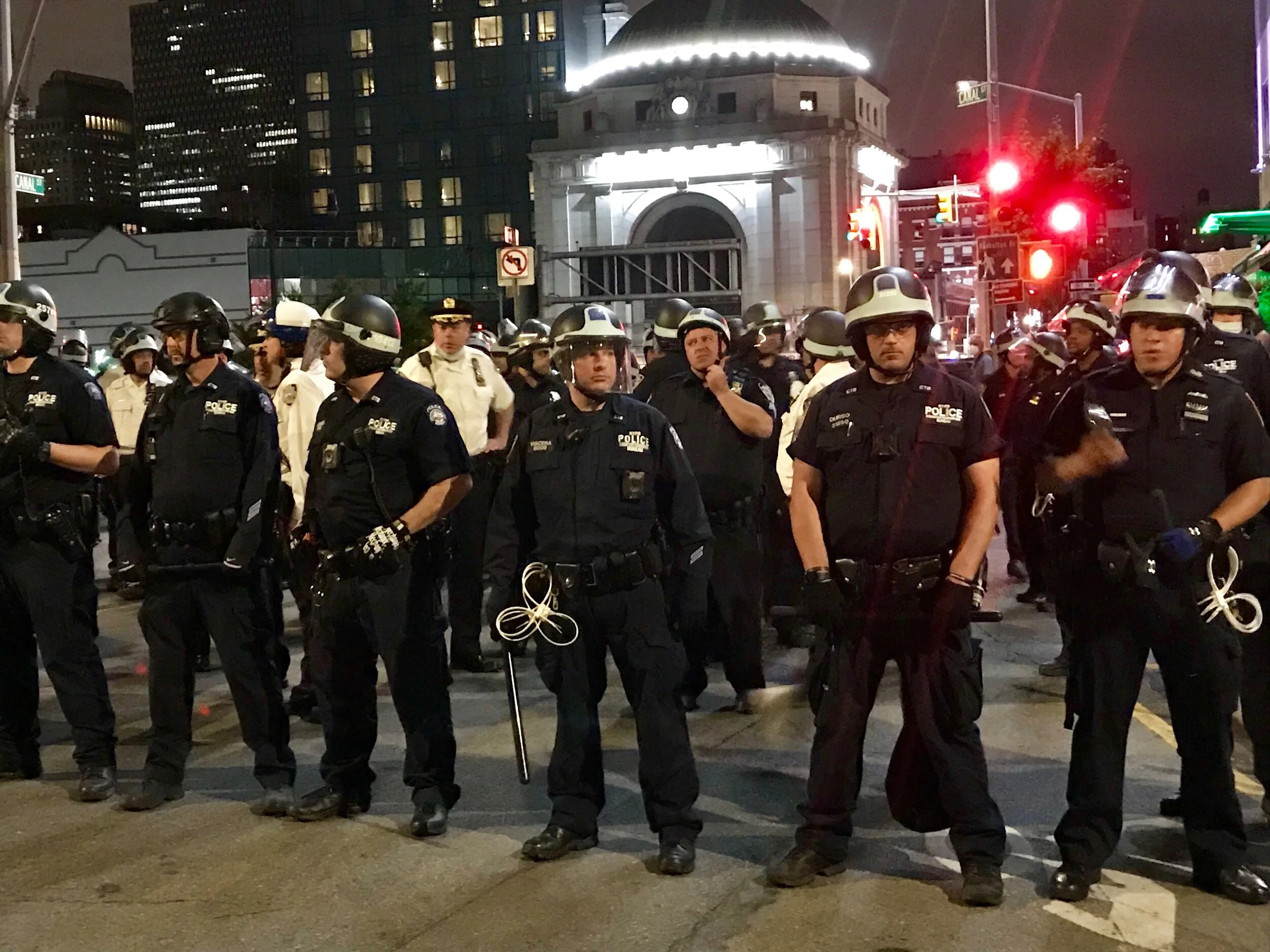After days of aggression, mayor and police commissioner vow to back off press
/Officers on the Manhattan side of the Manhattan Bridge were ordered to avoid “locking up the press” before rushing a group of protestors Tuesday night. Eagle photo by David Brand
By David Brand
An NYPD commander preparing officers to rush a large group of protestors corralled by cops at the base of the Manhattan Bridge reiterated a specific order Tuesday night: “No press.”
"One of the most important things is press is essential,” the officer told the cops massed at the corner of Chrystie and Canal Streets, just before they charged the protestors trapped on bridge. “I don't want to see anybody locking up the press.”
Moments later, nearby cops cautioned reporters to prepare for the surge. “We don’t want you caught up in the cloud of dust, like in the cartoons,” one officer advised.
The interactions seemed to follow a public effort by Mayor Bill de Blasio and top NYPD officials to rein in the way cops interact with reporters following a series of violent encounters nationwide. But further uptown Tuesday night, police failed to heed the guidance. A reporter was arrested even as they showed their press pass.
In New York City, journalists have reported being hit by baton-wielding cops and slammed in the face by officers’ shields as thousands of demonstrators have taken to the streets to protest the police killing of George Floyd, a 46-year-old black man in Minnesota. A HuffPost reporter was arrested while covering demonstrations Sunday. The Manhattan District Attorney’s Office is investigating one alleged assault by police against a reporter from The Wall Street Journal.
In Minneapolis, police have been accused of deliberately targeting reporters, while cops in Chicago pepper-sprayed journalists who said they clearly identified themselves inside a gas station.
On Wednesday, de Blasio denounced the arrests and violence against journalists during his daily press briefing.
“It's in our constitution, the freedom of the press — it must be honored,” de Blasio said in response to a reporter’s question. “So, anytime a journalist is in any way treated inappropriately, I want that investigated by the NYPD immediately and I want to make sure there are ramifications for that.”
Reporters embedded among demonstrators have borne the brunt of the violence, as cops charge crowds and attempt to break up the gatherings. Police Commissioner Dermot Shea said he called The Wall Street Journal to apologize to the reporter who was assaulted during Sunday’s demonstration.
“We a hundred percent respect the rights of the press,” Shea said Wednesday.
Nevertheless, Shea said NYPD officers are “not perfect” and that some of the violence stems from “people purporting to be press that are actually lying.”
During “chaotic situations, at times, a lot of people obviously know what to say and they’re lying at times so sometimes these things take a few moments to sort out, but if we can improve in areas we’ll improve,” he said.
After the press conference, an NYPD spokesperson said she was not immediately aware of protestors posing as reporters. But, she added, “if the commissioner said it, I’m sure it exists.”
It’s often easy to tell who is a journalist: Many reporters wear press passes that are issued by the NYPD, but those were enough to discourage the aggression or arrests in some cases.
Not every journalist owns an NYPD press pass, however, further complicating interactions. Paradoxically, reporters must demonstrate that they have covered at least six events where NYPD officers were present in order to obtain the pass.
Disagreements between police and the press are par for the course, as journalists press for information and officers attempt to exert control. But violence is troubling, according to the Society for Professional Journalists.
The organization, which advocates for the safety of media members, issued a letter to law enforcement on May 30 reminding officers of the constitutional rights of reporters and urging police to prevent physical violence against members of the media.
“We understand the stress and the dangers of your job, especially during these protests and riots,” SPJ wrote. “We understand that at times it is difficult to make decisions in the face of the crisis. We just ask that you take a moment and think before you take action against a journalist there to do their job.”
“Treat us with the same respect and dignity that you would want,” the letter continues. “These are very volatile situations and we do our best to cover these stories under the same conditions you are.”




